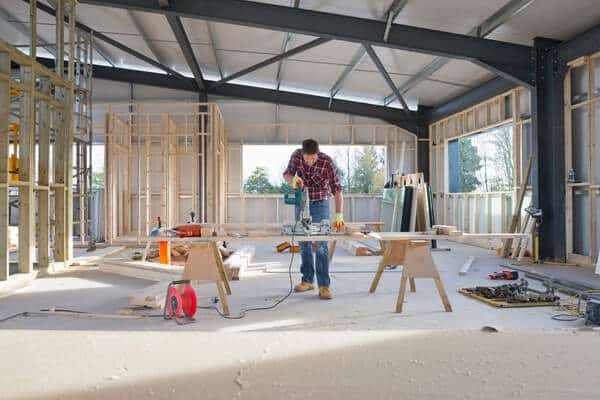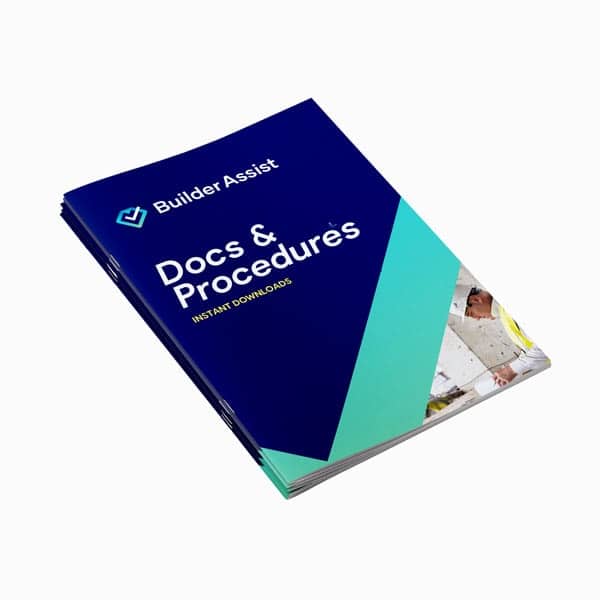
We’re often asked about SWMS for carpenters. What they are, how they work and what other documentation is needed for both the carpentry, and carpenter joiner trades. So, we’ve outlined everything you need to know about SWMS for carpenters and carpentry documentation.
Safety hazards, and how SWMS for carpenters help
Working in the carpentry, and carpenter joiner trades can be hazardous. Moreover, the dangers to workers are varied, and depend on the scale, and type of work. For carpenters on construction work sites, the exposure to dangers can result in injuries. These can include small cuts and bruises, through to fractures, musculoskeletal injuries and in some cases, death. Importantly, a SWMS for carpenters, and other safety documents help safeguard workers against injuries.

We’ve outlined everything you need to know about SWMS for carpenters and carpentry documentation.
What is a Carpentry SWMS (Safe Work Method Statement)?
A Carpentry SWMS is a document that outlines safety procedures and precautions. It must be followed when performing high-risk carpentry work. Importantly, a SWMS identifies and assesses the hazards associated with high-risk work. It then establishes measures to control and manage them. Find out more about SWMS in our blog What is a SWMS?
SWMS for carpenters and other Safety Documents required to keep workers safe
To minimise risks and protect workers, employers are required to implement formal documentation for work sites. Consequently they include Carpentry SWMS (Safe Work Method Statements), Safety Managements Plans, Job Safety Analysis (JSA), Risk Assessments, and more. They outline risks and mitigation methods.
We've outlined these documents in more detail below.
What are the major safety risks for carpenters?
Some of the major safety risks to carpenters on a construction work site include:
- Working at heights: Work on ladders, scaffolding and roofs can be dangerous if infrastructure is not properly secured. Falls from heights can result in serious injury or death.
- Working with power tools: Working with power tools including saws and drills can be dangerous and result in serious injury if not used properly.
- Exposure to dust and chemicals: Due to the nature of the work, carpenters may be exposed to dust and chemicals like adhesives, stains and paints. If not handled properly, they can cause respiratory problems and allergic reactions. The problems can have long-lasting and severe effects over time.
- Heavy lifting: Poor lifting methods for heavy materials can result in back strain and other musculoskeletal injuries.
- Working in confined spaces: Poor ventilation or confined spaces can be hazardous.
Mitigating these hazards is simple with a SWMS for carpenters in place.
What components to include in a SWMS for carpenters?
SWMS for Carpentry should include the following information:
- Description of the work: This section describes the type of carpentry work that is performed.
- Hazards: Your SWMS should identify the hazards associated with the work. Such as, working at heights, using power tools, handling hazardous materials and lifting heavy objects.
- Risk assessment: This section assesses the likelihood and consequences of each hazard. It also determines the level of risk associated with the work. This is a vital step to ensure the highest level of safety across a job site.
- Control measures: An outline of the measures that are put in place to control and manage job hazards. Some control measures include using fall protection equipment, providing PPE, implementing safe work practices and using proper ventilation.
- Training and supervision: This section identifies training and supervision that ensures workers understand and follow the SWMS.
Besides SWMS for carpenters, what other safety and quality assurance documentation do carpenters need?
In addition to a SWMS for carpenters, there are a number of other carpentry documents that work sites must have in place. These documents include:
- Carpenter Work Health Safety (WHS) Management Plan: A Carpenter WHS Management Plan supports the management of Work Health & Safety at a work site.
- Job Safety Analysis (JSA): A JSA is a risk assessment tool used to identify and address potential hazards for a particular job or task. The document breaks down each job into individual steps and identifies the potential hazards associated with each step. It also outlines the control measures that will be implemented to mitigate the hazards.
- Project Management Plan (PMP): A Project Management Plan is a formal document used by all workers involved with a construction project. It helps communicate and detail information, and describe processes that are completed during the project.
- Carpenter Quality Management Plan (QMP): A Carpenter QMP describes how quality will be managed throughout the life cycle of each project.
- Pre-Start Risk Assessment Checklist: A Pre-Start Risk Assessment Checklist is a document that assists the workplace manager. It records and documents a pre-start check of potential risks and hazards associated with proposed work on site, prior to commencement.
- Inspection Test Plan (ITPs): ITPs are comprehensive quality assurance documents. They set-out the job step critical points at various stages within each process for scheduled inspections and verifications. Carpentry ITPs include external cladding, fit out, joinery, timber frame and truss, timber strip flooring, and concrete formwork. In addition, window and door installation, internal walls and partitions, and suspended ceilings. Builder Assist offers downloadable templates of Carpentry ITPs.
- Risk Assessment: Risk Assessments assist the workplace controller to record identified potential hazards of proposed work. They aim to assess the risks involved and develop control measures to eliminate or minimise the risk. In addition, they assist in the preparation of a SWMS. Builder Assist Risk assessment templates make paperwork easy. Easily download a Risk Assessment and Pre-Start Risk Assessment Checklist.
Carpentry and Carpenter-Joiner Document templates
You may have written your own SWMS for carpenters and other carpentry documents. But, you may worry they're enough to protect workers, and the work you produce. If that’s the case, Builder Assist offers a number of templates that are user-friendly and instantly downloaded. The templates are:
- Industry-leading documents developed by award-winning industry experts
- Microsoft format and easy to edit
- Customisable to your company brand
- Full instructions on how to use the templates are provided
You can easily purchase a trade-specific SWMS template and other documents mentioned in this article. Simply search our documents by visiting Carpentry Documentation and Carpenter-joiner Documentation.
Explore our other range of SWMS templates as well including Construction SWMS, Electrical SWMS, Plumbing SWMS, Roofing SWMS template, Excavation SWMS template and more.



